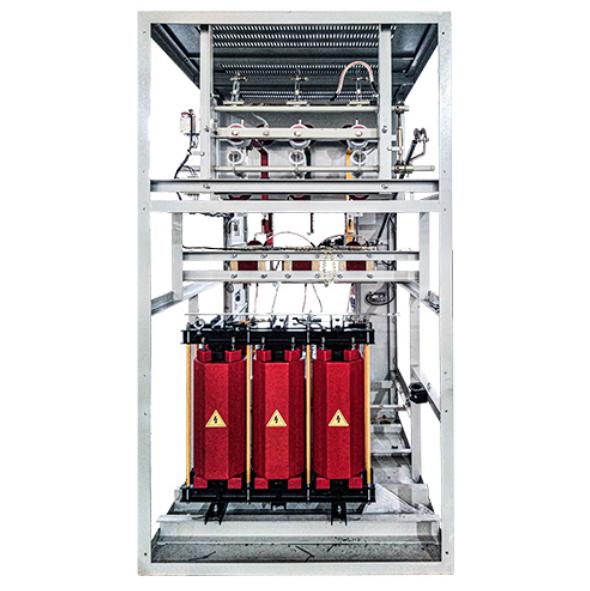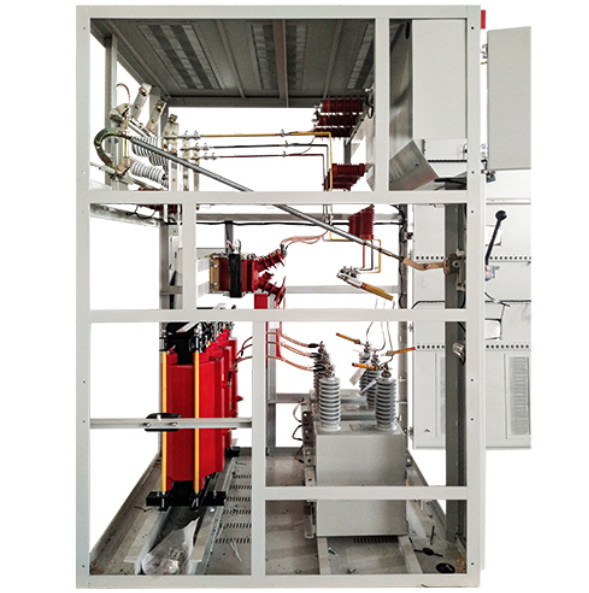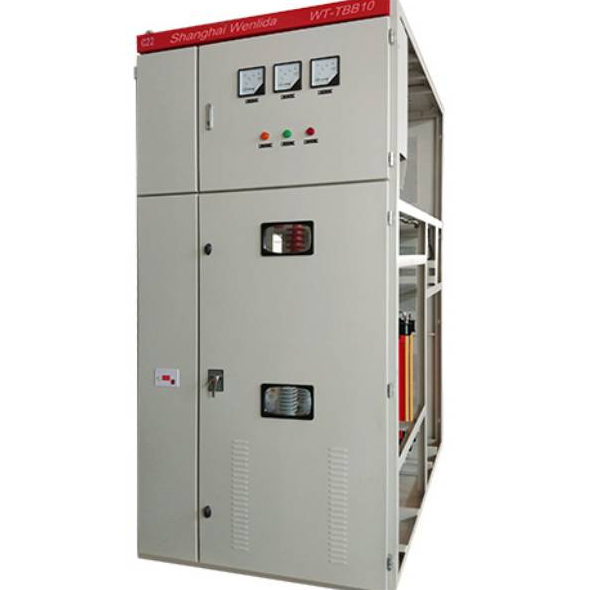The Science Behind High-Voltage Reactive Power Compensation Cabinet
Captivating Introduction
Have you ever wondered how power systems maintain stability amid fluctuating demand? The answer lies in high-voltage reactive power compensation cabinets, commonly referred to as shunt capacitor banks. These sophisticated devices play a crucial role in enhancing both power quality and overall system efficiency. By managing reactive power—the unseen force that flows between the power source and the load—these cabinets help to ensure that electrical systems operate smoothly and reliably.

Reactive power is vital for maintaining voltage levels, which directly impacts the performance of electrical equipment and the stability of the entire grid. Without effective compensation, systems can experience inefficiencies, voltage drops, and even outages. High-voltage reactive power compensation cabinets serve as a proactive solution, counterbalancing reactive power demands and supporting the reliable delivery of electricity. This makes them indispensable for industries and utilities striving to achieve optimal performance and energy efficiency in their operations.
Understanding Reactive Power
Reactive power is the “imaginary” component of electrical power that does not perform any useful work but is necessary for maintaining voltage levels across the system. It flows back and forth between the power and load, creating inefficiencies. High-voltage reactive power compensation cabinets are designed to offset this reactive power, improving the overall performance of power systems, especially in industrial applications.
The Functionality of Compensation Cabinets
These cabinets operate primarily through the interplay of capacitors and inductors, which generate and absorb reactive power as needed. By releasing capacitive reactive power, they counterbalance the inductive reactive power consumed by various loads. This balance not only enhances the power factor but also stabilizes voltage levels, reducing line losses and improving energy efficiency.
Importance of Regular Maintenance for Reactive Power Compensation Systems
Ensuring Longevity and Reliability
Regular maintenance of high-voltage reactive power compensation cabinets is vital for ensuring their reliability and longevity. These systems experience wear and tear due to constant electrical activity, which can lead to performance degradation over time. A well-maintained cabinet can operate efficiently for decades, minimizing operational disruptions.
Key Maintenance Practices
Essential maintenance practices include routine inspections, cleaning of electrical contacts, and testing of protective relays. These tasks help identify potential issues before they escalate, ensuring that the system remains operational and safe. Technicians should also check for signs of overheating or corrosion, which can severely impact performance.

Cost Implications of Neglect
Neglecting maintenance can lead to unexpected failures, resulting in costly downtimes and repairs. Regular maintenance not only extends the lifespan of the equipment but also enhances its efficiency, ultimately providing a better return on investment. In a world where energy efficiency is paramount, maintaining reactive power compensation cabinets is more critical than ever.
Exploring Smart Technologies in Reactive Power Compensation Cabinets
The Rise of Smart Solutions
As technology advances, so do the capabilities of high-voltage reactive power compensation cabinets. Smart technologies are being integrated to enhance their functionality, making them more responsive to real-time conditions. These innovations can significantly improve the management of reactive power in power systems.
Benefits of Smart Technologies
Smart cabinets utilize advanced monitoring systems that provide real-time data on power quality and system performance. This information allows operators to make informed decisions, optimizing the operation of the power system. Additionally, these technologies can automate adjustments to reactive power compensation based on fluctuating demand, enhancing overall efficiency.
Future Trends
The future of reactive power compensation is leaning towards greater integration with smart grids and renewable energy sources. As the energy landscape evolves, the demand for flexible, responsive systems will only increase. High-voltage reactive power compensation cabinets are poised to adapt to these changes, playing a pivotal role in modern energy solutions.
Integration Challenges: Installing Reactive Power Compensation Cabinets in Existing Systems
Overcoming Infrastructure Hurdles
Integrating high-voltage reactive power compensation cabinets into existing power systems can present several challenges. Aging infrastructure may not be designed to accommodate new technologies, leading to compatibility issues. A thorough assessment of the current system is essential to identify potential barriers before installation.
Technical Considerations
Installation requires careful consideration of technical parameters such as rated voltage, capacity, and environmental conditions. Ensuring that the new cabinets align with the existing system’s specifications is crucial for optimal performance. Additionally, skilled personnel must be involved in the installation process to prevent operational risks.

Strategies for Successful Integration
To mitigate integration challenges, a phased approach is often recommended. Gradually implementing reactive power compensation solutions allows for real-time testing and adjustments, ensuring compatibility and performance. Collaboration between engineers and technicians can also facilitate smoother transitions and minimize disruptions to power supply.
The Future of High-Voltage Reactive Power Compensation: Trends to Watch
Emerging Trends in Energy Management
As the demand for energy efficiency grows, high-voltage reactive power compensation cabinets are evolving. Key trends include the adoption of digital technologies, enhanced monitoring capabilities, and integration with renewable energy sources. These advancements will redefine how power systems manage reactive power.
Sustainability and Renewables
With the increasing integration of renewable energy sources, reactive power management will become even more critical. Wind farms and solar plants often create voltage fluctuations that can impact grid stability. Reactive power compensation cabinets will play a vital role in maintaining voltage levels, ensuring a smooth transition to a more sustainable energy future.
The Role of Regulatory Standards
As energy efficiency regulations become more stringent, the role of reactive power compensation systems will expand. Compliance with these regulations will drive innovation, leading to the development of more advanced, efficient cabinets. Companies that prioritize these technologies will likely gain a competitive advantage in the evolving energy landscape.
Conclusion
In conclusion, high-voltage reactive power compensation cabinets are not just essential components of modern power systems; they are pivotal in ensuring the stability and efficiency of electrical grids. By improving power factor and enhancing voltage stability, these cabinets help reduce energy losses and optimize system performance, which is increasingly important in today’s energy landscape. Their integration with smart technologies enables real-time monitoring and automation, further enhancing their effectiveness.
Additionally, regular maintenance is crucial to prolonging their lifespan and ensuring reliable operation. As trends in renewable energy and energy efficiency evolve, the role of reactive power compensation cabinets will only grow. Staying informed about advancements in this field is vital for any organization looking to enhance its power systems. For comprehensive solutions and expert guidance, exploring options from reputable suppliers like Shanghai Wenlida Technology Co., Ltd. can provide invaluable support in implementing these innovative technologies effectively.
